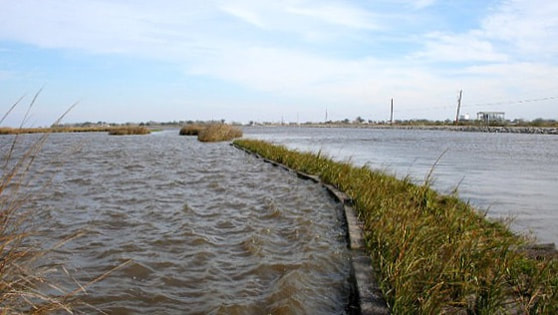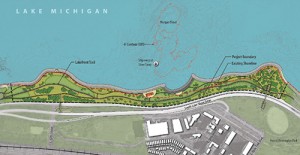Little Known Questions About Shore Protect Team.
Table of ContentsSome Of Shore Protect TeamUnknown Facts About Shore Protect TeamLittle Known Facts About Shore Protect Team.Shore Protect Team - QuestionsThings about Shore Protect TeamShore Protect Team Fundamentals ExplainedThe Ultimate Guide To Shore Protect Team
Reduction in home worth: As the location tourism is impacted by disintegration, so after that is the economic situation. Buyers are less most likely to browse for a beach residence that could be damaged anytime by the upcoming flooding and erosion emergency. In turn, residential property value can go down immensely and affect the whole area.Whether a coastline is simply little and congested or has to shut totally for the safety of the environment and close-by buildings, this significantly affects tourist. In turn, neighborhood economic climates are impacted (https://businessfreedirectory.biz/details.php?id=565449). Danger of injury: The enhanced threat of flooding and structural failures creates an increased threat of injury to nearby vacationers and area members

is home to greater than 84,240 miles of shoreline with 41% of it exposed to the open ocean. Coastal engineers supervise of securing the shore versus changes by reducing the detrimental effects of both all-natural and man-made occurrences. Shoreline stablizing is directly pertaining to their work. Waterside resorts: Due to the fact that coastline erosion influences tourism, it affects the success of waterside resorts.
The Ultimate Guide To Shore Protect Team
Coastal commercial organizations: No tourists implies no business. Coastal state parks: State parks that exist along shorelines are at threat of damage.
Hard stabilization makes use of synthetic frameworks as defense to control erosion. Many types of difficult stabilization like seawalls and sheet steel are not excellent for shoreline stabilization.
Not known Facts About Shore Protect Team
There's additionally not sufficient evidence of their effectiveness depending on the kind of coastline and neighborhood conditions. Difficult stablizing techniques have a tendency to be extra challenging to install and do not match the all-natural aesthetic, standing out like a sore thumb and hurting local ecosystems in numerous situations. Beach nutrition is the procedure of adding lost sand and debris back to beaches after disintegration has happened.
TrapBags aid in the process of coastline sustenance by protecting natural ecological communities and permitting plants to grow. While this process can be costly and is not permanent, the pros often tend to outweigh the cons. TrapBag barriers deal numerous buildings that make them suitable for coastal and shore erosion protection. They're: Eco-friendly: You can use indigenous soil both to border and to load the TrapBags.

The Greatest Guide To Shore Protect Team
They can additionally be installed without any type of heavy machinery. Inexpensive: TrapBags are perfect for both little and big areas of shoreline.
Integrated with a high building and construction cost, this has actually resulted in raising use other soft design seaside management options such as beach replenishment. Seawalls are built from numerous materials, the majority of frequently reinforced concrete, rocks, steel, or gabions. Other possible building and construction materials consist of vinyl, timber, aluminum, fiberglass composite, and eco-friendly sandbags made from jute and coir. The ideal seawall design depends on location-specific elements, consisting of bordering disintegration procedures. There are 3 major kinds of seawalls: upright, rounded, tipped, and piles (see table below). A report published by the United Nations Setting Programme (UNEP) recommends that the tidal wave of 26 December 2004 caused much less damage in the locations where natural barriers existed, such as mangroves, reef or seaside vegetation.
All-natural barriers, such as reef and mangrove forests, avoid the spread of tidal waves and the flow of seaside waters and mitigated the flood and surge of water. A cost-benefit method is an efficient means to determine whether a seawall is suitable and whether the advantages deserve the expenditure.
How Shore Protect Team can Save You Time, Stress, and Money.
A seawall is a static attribute which can contrast with the dynamic nature of the coast and impede the exchange of debris in between land and sea. The table below summarizes some favorable and adverse impacts of seawalls which can be utilized when comparing their effectiveness with other seaside monitoring alternatives, such as coastline nourishment. [] Benefits and drawbacks of seawalls according to Short (1999) Benefits Negative aspects Lengthy term solution in contrast to soft coastline nutrition.

This can create beaches to dissipate, making them pointless for beach goers. Usually, seawalls can be an effective method to control seaside disintegration, yet only if they are built well and out of products that can withstand the pressure of ongoing wave power. Some understanding is required of the seaside procedures and morphodynamics certain to the seawall place.
Facts About Shore Protect Team Revealed
Combined with a high building and construction price, this has actually caused boosting use of various other soft design seaside administration choices such as beach replenishment. Seawalls are built from different materials, the majority of typically strengthened concrete, stones, steel, or gabions. Other possible building and construction materials include plastic, wood, light weight aluminum, fiberglass composite, and eco-friendly sandbags made from hemp and coir. The appropriate seawall layout relies upon location-specific elements, consisting of surrounding erosion processes. There are three primary sorts of seawalls: upright, bent, tipped, and mounds (see table listed below). A record published by the United Nations Atmosphere Program (UNEP) suggests that the tsunami of 26 December 2004 created less damage in the areas where natural barriers were present, such as mangroves, coral reefs or coastal plants.
All-natural barriers, such as coral reefs and mangrove woodlands, avoid the spread of tidal waves and the circulation of seaside waters and minimized the flood and surge of water. A cost-benefit strategy is an efficient means to establish whether a seawall is appropriate and whether the benefits deserve the expense.
Everything about Shore Protect Team
A seawall is a static feature which can conflict with the dynamic nature of the coast and impede the exchange of debris in between land and sea. The table below sums up some positive and adverse effects of seawalls which can be utilized when comparing their effectiveness with various other coastal administration options, such as beach nutrition. [] Benefits and drawbacks of seawalls according to Short (1999) Benefits Downsides Lengthy term solution in contrast to soft coastline nourishment. Bulkhead construction.

This can cause beaches to dissipate, providing them useless for beach goers. Generally, seawalls can be a successful method to control seaside erosion, but just if they are created well and out of materials that can hold up against the pressure of ongoing wave energy.